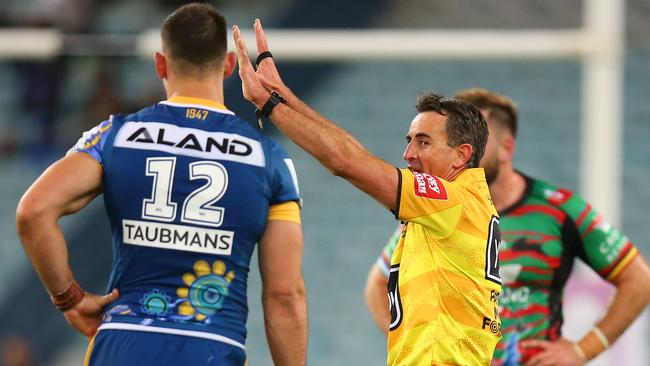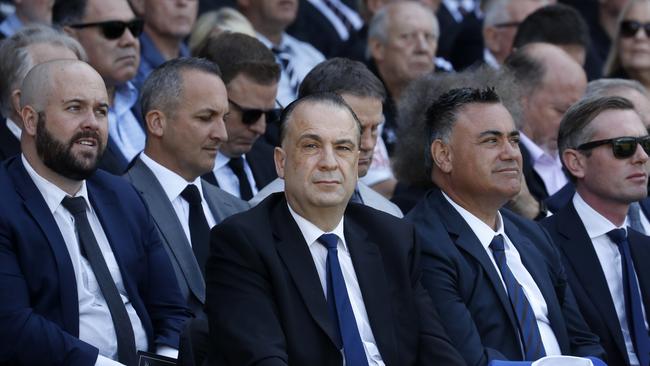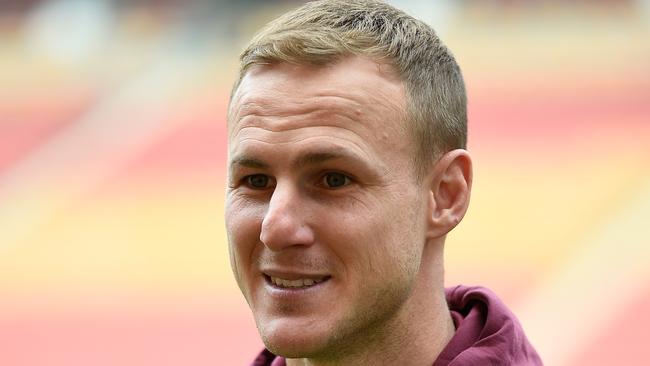Paul Kent: Crackdown stand-off between players and NRL causing major hurt to the game
Daly Cherry-Evans was most vocal as the players considered a revolt against Peter V’landys. But considering his role in the RLPA, maybe his comments should be taken with a grain of salt.

Opinion
Don't miss out on the headlines from Opinion. Followed categories will be added to My News.
When news broke on Sunday morning that players were considering a revolt against ARL Commission chairman Peter V’landys, the NRL chief executive, Andrew Abdo, called RLPA boss Clint Newton.
“Is this true?” Abdo asked.
Newton responded with what has become his staple, several well-worn lines that went along the lines that the players were unhappy, that they did not feel they were being heard, that they felt they were being disrespected …
Watch The 2021 NRL Telstra Premiership Live & On-Demand with No Ad-Breaks During Play. New to Kayo? Try 14-Days Free Now

Notably, it failed to answer the question, which has also become a staple of Newton’s public comments, so Abdo was more direct.
“Is there a campaign to get rid of Peter?” he asked again.
There was a significant pause, then more sidestepping.
“We need to talk this through… we could have avoided this …”
The NRL cannot work out whether the RLPA is being opportunistic or simply did not know or whether Newton is not telling them the truth.
It reveals the RLPA’s naivety.

As a workers union, they claim they want to be consulted on a health and safety issue to benefit its members, and a decision they reluctantly concede they would endorse anyway, but remain upset they weren’t asked.
The concern is that instead of intelligent discussion leading the game to a better place, both sides — those who support V’landys against those who don’t — will simply dig in and fight to defend their position rather than work for what is best for the game.
This position escalated over the weekend with news that players were exploring ways to remove the chairman.
Already it is getting close to being irreversible.
At the same time the NRL is beginning to question whether the players are getting the full story.
For instance, the players are complaining they have been left out of the conversation, yet on May 18 Abdo offered the RLPA a meeting to go through the NRL’s changed policy on head high tackles.

He has still not got a response, even as the players continue to claim all they wanted was a meeting to consult.
Newton is now urging a summit for the players to put their opinions across.
The NRL is right to be suspicious. What valuable contribution could they provide given the protests that have arisen since the decision was made?
Some players have argued they are “aware of the risk” they are taking as they urge the NRL to reconsider the high tackle crackdown.
ARL Commissioner Wayne Pearce does not believe it is that simple. Or would have the outcome they believe it would provide.
“Too often stakeholders become embedded in the short term focus because they want to win the comp or they want to win the next week’s game,” Pearce said, which is a strong truth in the game.

Indeed, many of the evils in the modern game, such as the wrestling in tackles and the time wasted on restarts, all the way through to head-high tackles being accepted as simply “an accident”, were all introduced by coaches and players for short term benefit at the expense of the game long term so, eventually, it all became normalised.
“As a Commission,” Pearce said, “we have to look at what is best for the game. The broader issues.
“It is the difference between managing a situation and leading through a situation towards a better place.
“A lot of people lose sight of the difference between the two.
“We have got problems with mums not wanting to let their kids play the game because they think it is too violent, or whatever, and a huge part of that is contact around the head.”
The NRL is right to be wary of the RLPA’s self-interest.

It was only last year that some of the game’s biggest names used their union, on the quiet, to try to save their pay packets during the Covid talks by negotiating a reduction in squads, from 30 players in the salary cap to 26. Development players would go from five to two.
V’landys refused to allow it to happen, recognising it for what it was.
The game’s high income earners, the ones who could likely absorb the pay cuts better than the low income earners, were prepared to toss their low earning teammates under the bus in order to save themselves.
But no low income players are present because they can’t help win the public relations war whenever the RLPA rolls up the sleeves against the NRL.
And now they continue to agitate.
It is why Daly Cherry-Evans comments after Sunday’s game should be dismissed.
He is the game’s highest paid player on $1.2 million a season. And he was in those meetings last year, as the RLPA’s general president, when the game’s senior players advocated cutting rosters.




